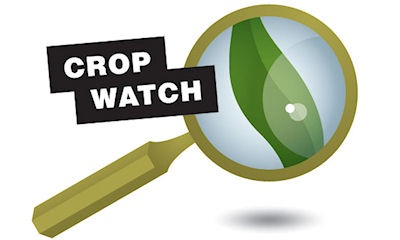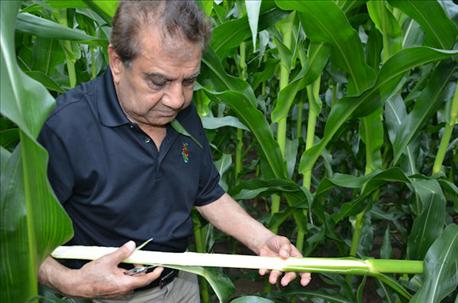
If you choose to plant an entire field to one hybrid, you don’t have to worry about matching up two hybrids that are compatible with each other. In that case you simply need to pick a hybrid which best fits the majority of soil types within the field.
In fields with variable soils, that can be a challenge. It’s why Kevin Adams, seed manager for Crop Production Services in northern and southeast Indiana, sees a bright future for multi-hybrid planting. That new technology would allow you to shift back and forth between two hybrids on the go in the same pass as soil type changes. You could select a hybrid best suited to a specific soil type in the field.

To plant more than one hybrid at a time in a field you need plenty of information,and more beyond today's multihybrid tech.
Crop Watch 1/18: Nubbins as second ear add little to yield potential
It isn’t foolproof. If you’ve got more than two soil types you may still find yourself compromising. Dave Nanda, crops consultant for Seed Consultants, Inc., sponsor of the Crop Watch project, says that’s one reason why multi-hybrid planting is a misnomer. It’s really a choice between two hybrids. He acknowledges that in cases where soils are distinctly different, that could be an edge over just planting one hybrid on all soil types in the field. But when he thinks of ‘multi-hybrid’ planting, he thinks of having more than two options for seed choices.
Evolving multi-hybrid tech

BEST FIT: Determining which hybrids fit on specific soils is partly art, not all science, Dave Nanda says. It’s a challenge facing those who believe someday farmers will plant from two to four hybrids in one pass.
Whether multi-hybrid planting will ever evolve into being able to switch to one of three or four hybrids on the same pass is up for debate. Generally, if agronomists and farmers show there’s an economic benefit, machinery companies will follow suit. However, Kinze spokespersons have noted that gearing up planters to plant two hybrids per pass didn’t require as much reengineering as you might think. Kinze’s multi-hybrid planter now on the market utilizes most of the same parts as the conventional Kinze planter in that model line. The primary difference challenge was installing a second set of seed meters. Designing planters to plant three or four different hybrids on the same pass might require more modifications, although spokespersons indicate it could likely be done.
For his part, Nanda thinks that selecting two hybrids to fit in one field is enough of a challenge. He doesn’t see the seed industry ready, at least not now, to be able to recommend three or four hybrids for the same field with any degree of certainty.
Part of the challenge would be collecting enough data and factual information to know more precisely how various hybrids would perform on specific soils, he says. Weather and environment play a large part in the equation, and that makes it infinitely more difficult to draw sound conclusions in many cases.
The other complicating factor is that modern genetics turn over rapidly. While a hybrid might be in pre-release trials for two or more years, many hybrids today only stay in line-ups for as little as three years. That limits the seed company’s ability to gather lots of information on exactly how each hybrid will perform under various environmental conditions on different soil types, Nanda believes. By the time enough information is collected, a newer hybrid with somewhat different characteristics may be coming along to replace that hybrid in the line-up.
Crop Watch 1/11: Outside rows only excel if they have all the nutrients they need
Right now it all makes good food for thought, Nanda agrees. After all, farmers planting check-row corn decades ago with horses couldn’t imagine a planter that could plant two hybrids in one pass. Perhaps planting three or four hybrids per pass may be common- someday. The key word, Nanda believes, is ‘someday.’
About the Author(s)
You May Also Like




